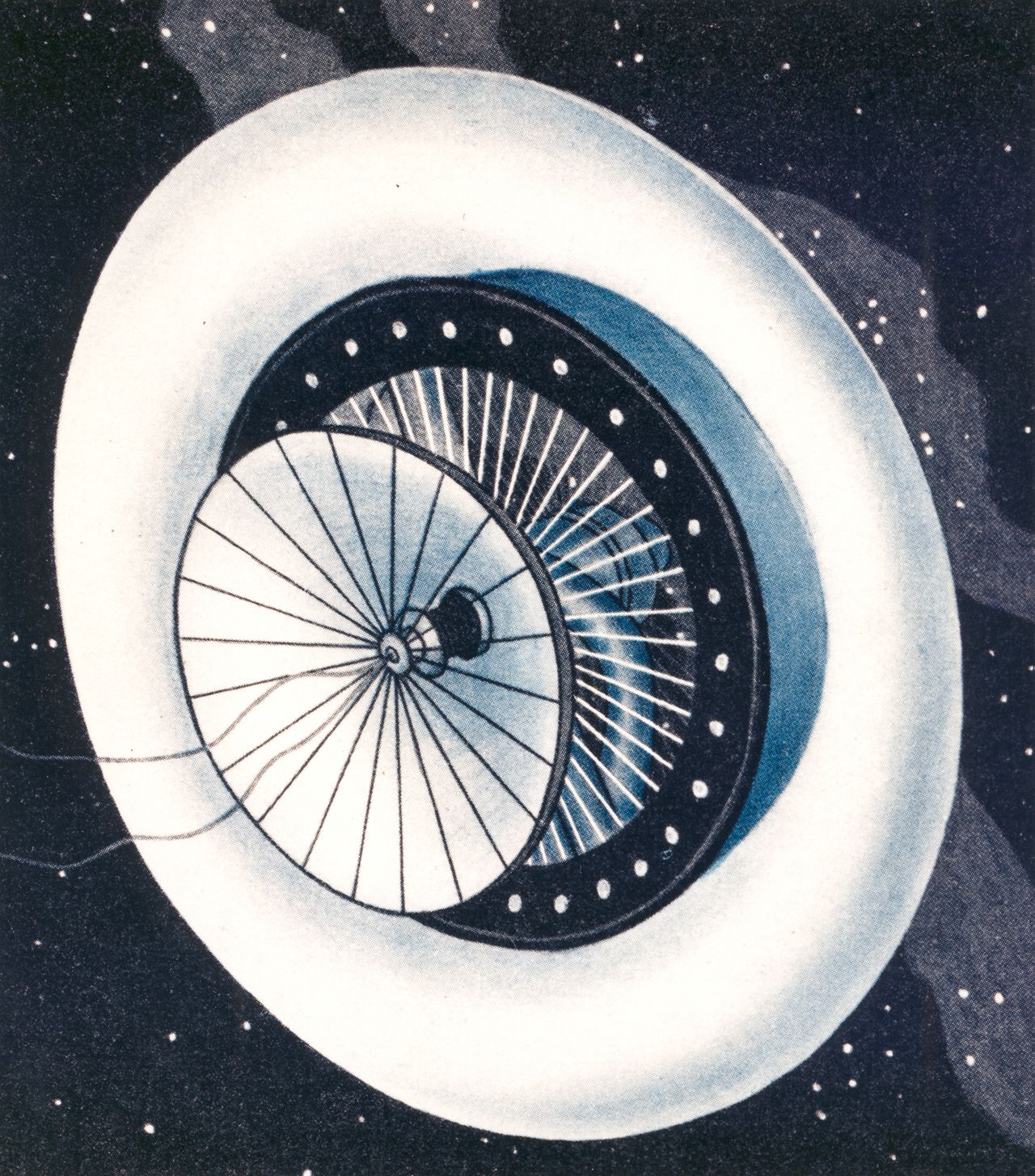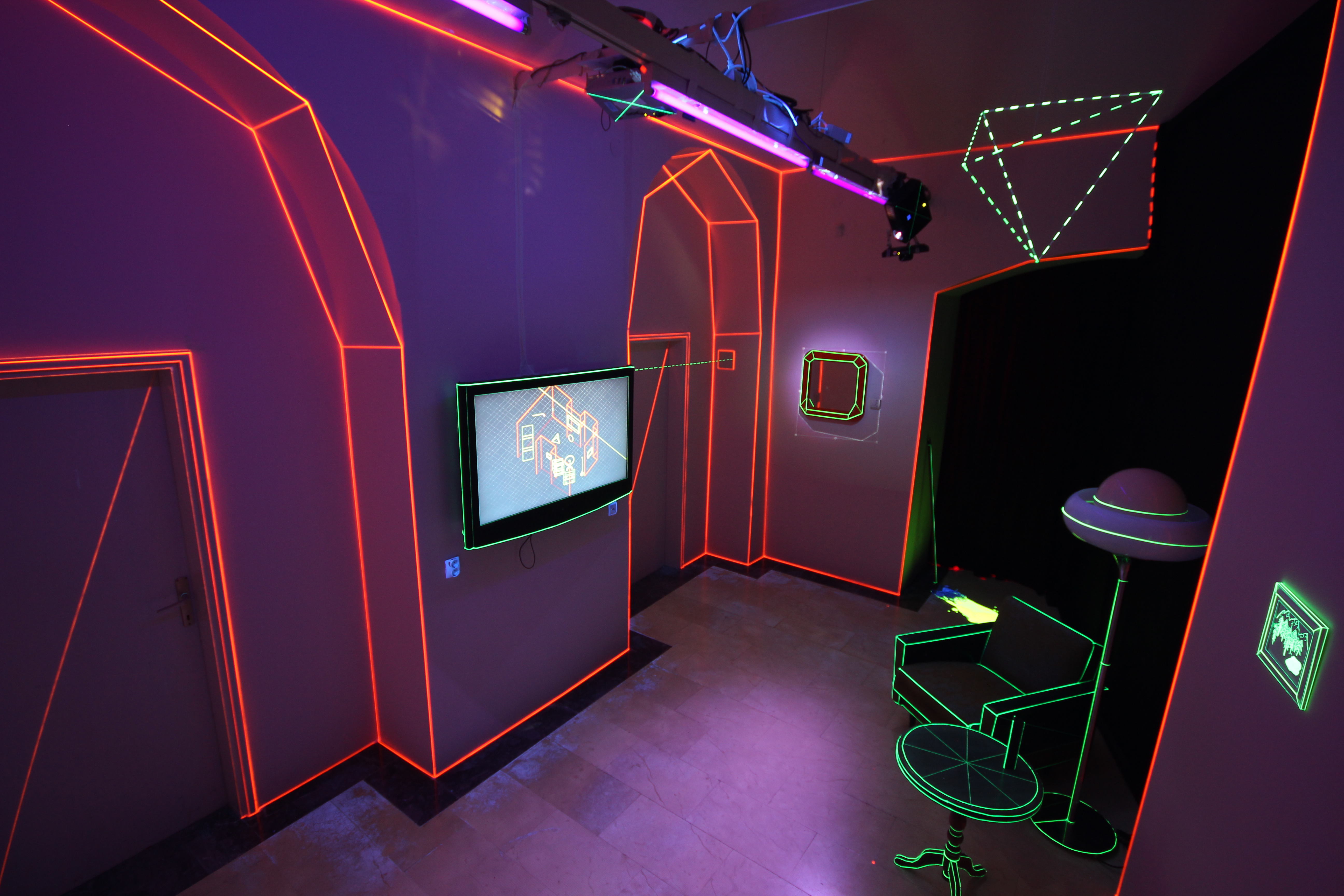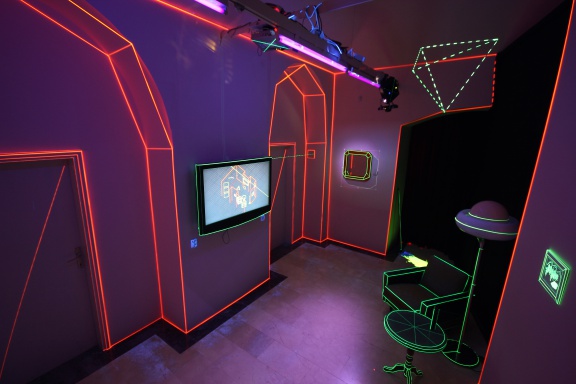Introduction to New Media Art in Slovenia
The local terminological context
The term intermedia dates back to the mid-1960s and its use is largely connected with the writings of Dick Higgins (1938–1998), one of the co-founders of Fluxus. Among the fundamentals on which the movement was based is the departure from the established art genres and the use of new media, intermedia or non-media to blur the boundaries and thus refuse classification by way of the traditional canon. Over the years, intermedia has been used interchangeably with multi-media. Intermedia, however, has become preferred for expressing the interdisciplinary character of the art practices and activities to which it refers.
The habitual use of the term intermedia in today's Slovenian context could be attributed to its regular use by the public calls of various institutions. The term became embedded in the vocabulary in 2003 when the Ministry of Culture established the Section for Intermedia Arts (later, intermedia art was placed under the wider and unifying Creativity Directorate), thus naming its open calls the same way. In general, it combines all artistic practices that use unstable, variable and dynamic media (or technologies) to express themselves in interdisciplinary ways and cross and fuse boundaries of traditional media or genres. Thus categories such as interventions in the public space could be included.
Historical forerunners
The first intersection between art and science in Slovenia can be traced as far back as to the beginning of the 20th century and the pioneer and visionary of cosmonautics Herman Potočnik (1892–1929), known under the pseudonym Herman Noordung. His work has influenced many artists and researchers, not least Arthur C. Clarke and Stanley Kubrick. However, the ultimate forerunners of new media art can be found rather in the experimental artistic avant-gardes from the beginning of the 20th-century (dadaism, constructivism, futurism).
 Hermann Noordung depiction of a space station habitat wheel. Hermann Potocnik (1892-1929), also known as Herman Noordung, created the first detailed technical drawings of a space station, 1929
The iconic "Space Station Habitat Wheel" by Herman Potočnik Noordung, 1929.
Hermann Noordung depiction of a space station habitat wheel. Hermann Potocnik (1892-1929), also known as Herman Noordung, created the first detailed technical drawings of a space station, 1929
The iconic "Space Station Habitat Wheel" by Herman Potočnik Noordung, 1929.
In Slovenia, one of the most recognised representatives of that period is Avgust Černigoj (1898–1985). He was an early mentor to Edvard Zajec (1938–2018), a pioneer of computer art. It was with Černigoj where Zajec could focus on the significance of the processual aspect of art instead of the product itself. Zajec, who was partly educated in the USA, started incorporating computer graphics in his artistic practice in the late 1960s and constantly searched for two-way communication between the author and the viewer.
From the aspect of processual and conceptual art, the same period was marked with the presence of the neo-avant-garde OHO group (1966–1971). Founding OHO members were Marjan Ciglič (1944–), Iztok Geister (1945–) and Marko Pogačnik (1944–) who along with a great many of their later collaborators belonged to the various fields of art creation, from fine art to literature, film making, critical view and theory. They combined the primary areas of their work in an intermedia manner and are known for their objects, installations and happenings documented on film and with photographs.
Background
New media art is a vital and diverse artistic sector in Slovenia that has seen intensive development during the last decades. It was foreshadowed in the late 1960s by conceptual artists experimenting with computer art (Edvard Zajec), intermedia art (OHO Group), and video (The White Milk of White Breasts by Nuša and Srečo Dragan from 1969 is considered to be the first Slovene video). In the 1970s some artists and theoreticians with the background in fine arts, literature, street theatre, film or music researched and reflected the different uses of digital and analogue technologies and their artistic as well as social implications. The visual and concrete poetry was published in Tribuna Magazine and by the Maribor-based Obzorje Publishing House (in 1974, for example, it published a study Slovenian Language – Literature – Computers by Denis Poniž). Another important organisation that supported the experiments and intermedia art was ŠKUC Association. In 1978 a group of artists (Dušan Pirih Hup, Iztok Osojnik, Vesna Černivec and others) built the Hidrogizma installation in Škuc Gallery that has remained one of the most popular works of the period. In the late 1970s video artist Miha Vipotnik started to collaborate with the Slovene national television and completed there the Videogram 4 project, based on the manipulation and transformation of the image. In 1983 he established VIDEO CD, the first international video festival in Ljubljana (organised by Cankarjev Dom, the then almost brand new cultural and congress centre of the Slovene republic). Theoretical texts and reviews were published in specialised magazines such as Ekran, Magazine for Film and Television or the now defunct Sinteza Magazine for design, architecture, and fine arts (which in 1986 presented a joint issue on various aspects of video).
The 1980s were marked by the development of the alternative art forms staged at venues such as Škuc Gallery or Disco FV and organised by the then joint organisation ŠKUC–Forum. The most prolific artists experimenting in video during that period included the duos Srečo Dragan & Nuša Dragan, Zemira Alajbegović & Neven Korda and Marina Gržinić & Aina Šmid. In 1986, for example, video gained recognition through Auto-vision, the first programme on video art made for the national television by Miha Vipotnik and Marijan Osole-Max. The new technology, however, was an integral part of the performances and installations by Ema Kugler, Marko A. Kovačič, Bojan Štokelj, and Marko Košnik (who founded the Egon March Institute in 1986), and of work by the Neue Slowenische Kunst groups (including music and graphics by Laibach, fine arts by Irwin and Sestre Scipion Nasice Theatre directed by Dragan Živadinov, who later developed Noordung Cosmokinetic Cabinet). The new media art and the use of technologies within the NSK endeavours questioned the notions of authorship and originality in the arts and orchestrated the creation of the Gesamtkunstwerk artworks, culminating in the Krst Pod Triglavom [Baptism under Triglav] performance, staged in Cankarjev Dom in 1986. For more chronology, please, read the New Media Art Timeline article that covers the 1992–2007 period.
Development and production modes
The new media art has changed the landscape of creation as well as that of cultural management and production. Several new media art projects and their exponents (the HEXPO Festival of self-organised cultural forms in 2000, for example) reiterated the significance of the tactical use of technology – new media that promote creation and imagination, participation and choice over representation, spectatorship and consumption.
It was characteristic of new media artists that they had to develop their own technological means of expression, and because of this working process they started to build their own new systems of production and communication. The main protagonists of today’s Slovene new media arts are internationally-acclaimed artists (and theorists) who attained impressive and pioneering achievements during the 1990s, when they also managed to establish their own creative artistic platforms: Marko Košnik (Egon March Institute), Marko Peljhan (Projekt Atol Institute), Igor Štromajer (Intima Virtual Base), and Davide Grassi (Aksioma Institute).
During the last decade the new media artworks have been slowly incorporated in the acquisition policies of the Slovene public art museums (Museum of Modern Art and Maribor Art Gallery, for example) and the ministry's funding policy encourages co-productions on a national and international level.
Artistic background
The first generation's artistic point of departure was performing arts (theatre in the cases of Peljhan and Štromajer, and music/sound in the cases of Košnik or Savski); some individuals also started to emerge from Academy of Fine Arts and Design (Kreuh, Kracina, and later Sašo Sedlaček, Polona Tratnik, etc.) and to collaborate with graduates of the Faculties of Computer Engineering in Ljubljana and Maribor (ArtNetLab). Of all the artistic disciplines, new media artists are the most internationally involved as far as project co-production (artistic collaboration as well as funding) and education is involved: while the older generation lectures in Europe, America and Asia, the young generation has taken interdisciplinary studies (sound, visual arts and media arts) in such places as London, Graz, Vienna and Venice.
Institutions and venues
During the 1990s creative diversity in the field of new media art was backed up by the emergence of a handful of organisations and producers, including Ljudmila - Ljubljana Digital Media Lab, Kapelica Gallery and KIBLA Multimedia Centre. Today all of them are renowned in international new media circles for their participation in the new media festivals, conferences and networks (for example, ISEA, Ars Electronica festival, Transmediale Berlin, Dutch Electronic Arts Festival (DEAF), SEAFair in Skopje, European Cultural Backbone (ECB), European Multimedia Forum, Webby Awards), where they have promoted and sought new models of co-production as well as new funding sources, both locally and internationally.
Other important venues for the presentation of new media art since 1992 have included P74 Centre and Gallery (which has promoted emerging artists) and occasionally Škuc Gallery and the Mala Gallery, while bigger overview exhibitions were shown at Museum of Modern Art. In Maribor, KiBela Art Space at KIBLA Multimedia Centre also presented several new media art projects. The Slovenian Cinematheque was an important venue for audio-visual projects. At the same time Slovenia acquired two festivals dedicated to new media art, and several others that included new media art projects. Established in 2001, Cyberpipe in Ljubljana was another vibrant new media art catalyst. The M3C Multimedia Centres Network of Slovenia, set up in 2004 with state and European support, has a growing membership of 23 multimedia arts organisations.
Spearheaded by the international new media festival Speculum Artium, organised by the Delavski dom Trbovlje Cultural Centre, the Trbovlje, New Media Setting (TNM) was set up in 2009, turning the town of Trbovlje and the wider Zasavje coal mining region into a venue for new media art, with information technology, robotics, bio-mechanics and virtual reality in focus.




